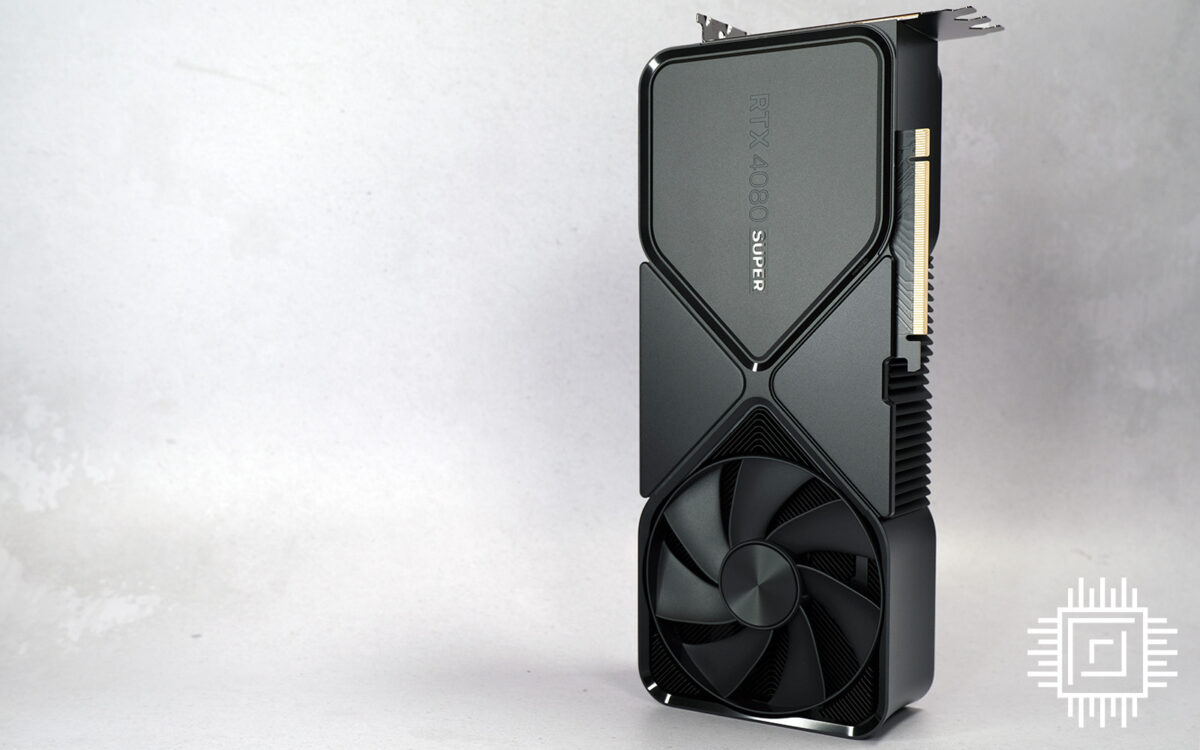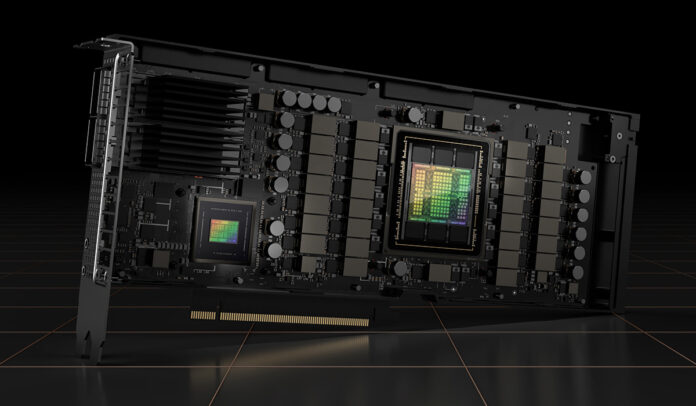Without doubt, the key technology watchwords in 2023 were artificial intelligence (AI). AI’s momentum shows no signs of slowing down this year. Though we’re still very much in the infancy of the technology, generative AI, defined as the ability to create new engaging content, has taken the world by storm. We’re sure everyone reading this has had a play with ChatGPT or other similar programs that are becoming eerily impressive at providing human-like responses to anything you can think of.
AI doesn’t happen by magic. Smart AI is trained on huge models that oftentimes contain many billions of parameters. In layman’s terms, a model may represent the entirety of Wikipedia, for example. The secret sauce is in extracting probable outcomes from any user prompt such that the response feels natural and, dare we say, intelligent. This training phase requires truly incredible computational resource. Large-language models such as ChatGPT need tens of thousands of GPUs to run efficiently. It’s no coincidence that NVIDIA, the worldwide leader in cutting-edge graphics, is best placed to deliver compelling AI hardware at real scale.
Though AI is very much the hot topic and on the lips of everyone with a passing interest in technology, NVIDIA continues to push forwards for GPUs designed primarily for computer gaming. The GeForce ecosystem is rife with key advancements that innovate outside of pure graphics rasterisation. Ray tracing and DLSS are the cornerstones on which the latest GeForce RTX 40 Series are built. Over 500 games and apps now benefit from them, indicating great maturity and penetration. Furthermore, NVIDIA’s own research from nearly a year ago maintains 83% of RTX 40 Series gamers enable ray tracing, while 79% turn on DLSS, up from 37% and 26%, respectively, in 2018. The adoption trajectory is abundantly clear. For the gamer, the only logical conclusion one can draw is that NVIDIA will continue investing heavily into these technologies for future graphics card generations.
Getting under the skin of AI and gaming in equal measure, Club386 chatted to Luke Spring – NVIDIA GeForce EMEA Communications Lead – to find out more about how one of the world’s most important companies views its role in shaping GPU technology of today and tomorrow.

Club386: Feels like yesterday the industry was still struggling to tackle speech recognition, and now here we are, with advanced AI capable of so much more. Did you ever imagine progress would be so quick, and what do you consider to be the key turning point?
LS: The iPhone moment of AI has started. AI is one of the most important trends in the history of personal computing, and is transforming the way we interact with the world. AI capabilities are being incorporated into every essential app and will impact every PC user – delivering new experiences, unlocking creativity, driving innovation, and making it easier to get more done. Its capabilities are growing by the minute while rapidly becoming more accessible to consumers through simplified interfaces and easy-to-use tools, and this is just the beginning. NVIDIA has been deploying AI-powered technology to consumer PCs for over 5 years, starting when we launched the first GPUs with Tensor Cores, designed specifically to accelerate AI.
Club386: Turning our attention to computer games, it seems we are on the brink of a hyper-realistic revolution. Ray-tracing has shown us what is possible, but AI image generation evidently rewrites the rule book. Is there a limit to its potential, and do you envisage a future where entire worlds are generated and populated at a user’s request?
LS: We’re at a point now where generative AI can produce images and more for us, and now even gives us more control on the output, including changing and fine-tuning the details. Generative AI by iStock, built and powered by NVIDIA Picasso, provides a commercially safe image generation service, as well as new editing APIs to give users control over their generated images — from masking a region of an image to fill with a person or object via a text prompt, to expanding images to fit various aspect ratios, filling in new areas based on the context of the original image.
AI will be an important tool in the future of gaming, it will contribute to the rendering and synthesis of the environment, the animation of the characters, and allow for content generation at scale. But infinite content doesn’t imply infinite creativity, and there is still work to be done to ensure it is as responsive and useful of a tool as possible. The limits will still be the user’s imagination! AI will just be another tool they use to bring their ideas to life.
Club386: A lot of folks will struggle to grasp that future and continue to lament the so-called ‘fake AI frames’ in today’s games. How do you respond to such commentary?
…these kinds of games at maximum settings just wouldn’t be possible without DLSS.
Luke Spring
LS: The best thing gamers can do is try DLSS Frame Generation. We work very closely with game developers to ensure great implementation and if we look at game releases today, DLSS is always one of the most requested features. And if it is missing from a game we have seen an outcry from consumers to have it supported. Frame generation is just one aspect of DLSS 3.5’s suite of AI rendering technologies; this doesn’t just mean faster frame rates, but also better image quality, and great responsiveness.
For full ray tracing, also known as path tracing (the most realistic light simulation available), DLSS frame generation is essential tech to ensure the very best frame rates. With DLSS, powerful GPUs can render jaw dropping visuals without tradeoffs to smoothness or image quality and this can be seen in acclaimed titles like Cyberpunk 2077: Phantom Liberty and Alan Wake 2 – these kinds of games at maximum settings just wouldn’t be possible without DLSS.
Club386: We all want to see true-to-life visuals, but outside of graphics fidelity, what other revolutionary experiences can AI bring to next-generation games?
LS: First, NVIDIA ACE opens up new possibilities for game developers by populating their worlds with lifelike digital characters while removing the need for pre-scripted dialogue, delivering greater in-game immersion. The new ACE microservices, announced at CES 2024, lets developers build interactive avatars using AI models such as NVIDIA Omniverse Audio2Face™ (A2F), which creates expressive facial animations from audio sources, and NVIDIA Riva automatic speech recognition (ASR), for building customisable multilingual speech and translation applications using generative AI.
As you said, we all want to see true-to-life visuals, but nobody wants this to come at the cost of a game’s performance. NVIDIA DLSS utilises deep learning algorithms to perform Frame Generation and Super Resolution, boosting performance while maintaining those high-quality visuals that allow for a fully immersive gaming experience.
Club386: Attention naturally turns to games of the future, but AI has an important role to play among the back catalogue. Remasters of classics have become commonplace, so how can AI help accelerate the development of such titles?
LS: One of the most time intensive parts of modding is updating every texture to modern gaming standards – that means building them at higher resolutions with a physically-based rendering (PBR) workflow, so the materials can react to ray-traced lighting. RTX Remix offers Generative AI Texture Tools to automatically enhance textures from classic games. The AI network has been trained on a wide variety of textures, and can analyse them to identify the material properties they are meant to possess. It will generate roughness and normal maps to simulate realistic materials, and upscale the pixel count of textures by 4X, ensuring that the remastered content not only looks stunning but also retains the essence of the original game. This is a huge upgrade over the simple colour textures found in classic games, making AI invaluable in giving artists more time to turn their attention towards manually rebuilding hero assets that excite the imagination and define the visuals of a game.

Club386: More specifically for games of today, NVIDIA has introduced a suite of technologies – ray tracing, DLSS, etc. – to improve both visual quality and framerate in one fell swoop. What steps is NVIDIA taking to make it even easier for developers to use these tools in their next title?
LS: We’re always looking for ways to collaborate closer with our game developers and publishers. We hope to get our technologies into as many games as possible because we think that they can benefit all gamers. Streamline is a good example of that, it allows game developers to code once, and add various super resolution and graphics effects to their game.
Last year NVIDIA introduced Streamline as an open-source cross-IHV (Independent Hardware Vendor) framework which aims to simplify integration of multiple super resolution technologies and other graphics effects in games and applications. Since NVIDIA DLSS launched in 2019, a number of super resolution technologies have been released by hardware vendors and engine providers. Game developers are faced with integrating multiple SDKs, often with varying integration points and compatibility.
Streamline offers a single integration with a plug-and-play framework. It sits between your game and render API, and abstracts the SDK-specific API calls into an easy-to-use Streamline plugin. Instead of manually integrating each SDK, developers simply identify which resources (motion vectors, depth, etc) are required for target super resolution plugins and then set where they want the plugins to run in the graphics pipeline.
Club386: NVIDIA is now described as an AI company, rather than a graphics company. What does that mean for GeForce enthusiasts who’ve loyally followed the brand throughout the years?
No other company is investing as heavily in furthering gaming technology than NVIDIA.
Luke Spring
LS: Our focus on games is unwavering. NVIDIA believes that next generation gaming experiences sit at the intersection of AI and ray traced graphics and continue to innovate heavily here, whether it is DLSS 3.5, RTX Remix, ACE and more. No other company is investing as heavily in furthering gaming technology than NVIDIA.
At NVIDIA, we have always led the way when it comes to innovation in gaming technologies, and we’ve been delivering new and innovative ways to play games and create for years. Now we are making games more intelligent and playable through the adoption of AI technologies, which ultimately creates a more immersive experience. Don’t forget, gaming has traditionally been at the cutting edge of new technology, and for many, their first ‘everyday’ use of AI has been with NVIDIA DLSS in their favourite games.
Club386: AI can impact all walks of life. Given its potential reach, how important is strict governance, and do you believe such restrictions and oversight are necessary in preserving our way of life?
LS: We believe AI should be regulated and it is currently through a variety of existing laws like product liability and consumer protection laws. AI is an important technology that affects the social fabric, norms, and safety of people. Regulation is helpful for technologies that can do a great deal of social and industrial good, but also have the potential to be used in harmful ways.
Club386: There are concerns around the possibility of biased algorithms, a lack of transparency and unexplained decision making in the training and utilisation of AI models. Are those valid concerns in your book?
LS: AI is a powerful technology that must be developed and deployed responsibly. We share the concerns that have been widely raised about the potential risks and harms. While the industry is working to develop new breakthroughs, we have to put equal or greater emphasis into developing technology for safe AI. That’s why we recently introduced NeMo Guardrails open-source software, which helps developers deploy safe, accurate and appropriate AI systems using large language models.
